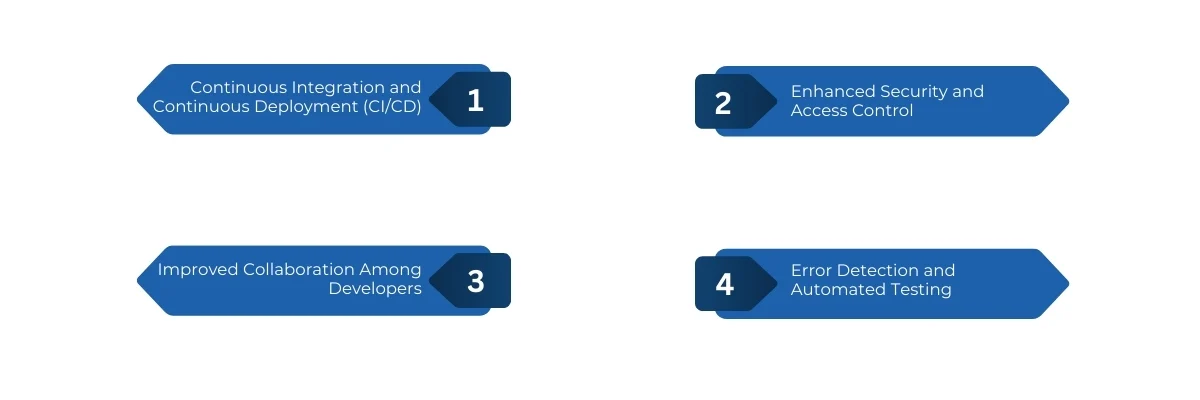
Have you faced challenges or delays in Salesforce deployments? GitHub Actions speeds up processes by automating DevOps. Deployment problems often result from manual steps. Automation enables test selection for a specific version to run before the release. By combining Continuous Integration (CI) and Continuous Deployment (CD), GitHub Actions enhances security, improves collaboration, and reduces deployment risks.
This guide will help you create a Salesforce DevOps pipeline with GitHub Actions.
GitHub Actions is a workflow automation tool within GitHub repositories. Salesforce DevOps automation necessitates a systematic approach to version control, testing, and deployment.
A survey revealed that 71% of respondents used at least one commercial Salesforce DevOps solution. This data indicates a growing trend towards adopting DevOps tools in the Salesforce ecosystem.
Automating Salesforce DevOps activities using GitHub Actions has various advantages that can change your salesforce development lifecycle. Here are some benefits:
Code quality is improved and integration problems are decreased by using CI/CD, which ensures that code changes are automatically tested and delivered. The same report states that 83% of teams either use CI/CD or plan to use it this year.
GitHub Actions' encrypted secrets ensure that credentials and personal information are safe and secure, allowing sensitive data to be stored securely. The industry prioritizes security, as evidenced by the Salesforce survey, which found that 82% of teams are already compliant with at least one security standard.

With automated workflows, teams can focus more on coding and less on manual operations, resulting in improved cooperation. According to the same survey, 73% of teams use the same release process for all updates, independent of role or metadata type, showing increased collaboration and unified processes.
Automated testing within GitHub Actions aids in the early detection of defects, leading to more reliable releases. Gearset found that exceptional teams identified problems or defects in under 10% of all their releases, showcasing the importance of automated tests.
Salesforce DevOps automation enables development teams to expedite deployments, boost collaboration, and strengthen security. Here is a step-by-step approach to setting up a Salesforce DevOps pipeline with GitHub Actions:
You cannot make deployment automation until the setup is done on your end. Microsoft incorporates VS Code with GitHub into a perfect enrichment to manage code versions. Improve the configuration to experience effective automated processes.
To Set Up Your Development Environment:
This arrangement allows developers to work together effortlessly while also tracking code history. The next step is to set up authentication to protect essential credentials.
Security is essential in Salesforce DevOps automation. Exposed workflow credentials will allow for unauthorized access. GitHub Secrets enables you to securely store critical credentials and manage deployments.
To Secure Authn Credentials:
Reference this secret within GitHub Actions workflows for automated authentication. With authentication secured, your pipeline is now safe. Now let's write a GitHub Actions workflow to deploy automatically.
A GitHub Action workflow automates a Salesforce deployment. After you update the code, a deployment and test happen automatically. There will be no human deployment errors.
To Create a Deployment Workflow:
Now, all code updates are automatically deployed with a seamless process. We then add Continuous Integration (CI) to test code before deployment.
CI makes sure that every code change is tested before it is deployed. This enhances code quality and helps avoid breaking changes. Automated testing minimizes manual effort and enhances efficiency.
To Implement Continuous Integration on Salesforce:
Run tests on each commit to ensure faulty code does not merge. By making testing automated, teams can identify problems early and keep the code of high quality.
The release of code is handled automatically through CD, reducing the risk of human error. This allows for tested changes to be deployed quickly and accurately.
To Deploy Code in Salesforce Automatically:
Salesforce development services can work more efficiently with Continuous Integration and Delivery. Teams spend barely any time installing their solutions and have increased time on innovation.
With Salesforce DevOps automation on GitHub Actions, teams could afford to streamline their deployment speed and reliability. Authentication, testing, and deployment are automated to remove the chances of errors while improving collaboration.
A well-structured DevOps pipeline would always be able to bring the best software performance along with hassle-free updates. These conditions are now favorable for organizations that are offering Salesforce development services with less downtime and better efficiency. For expert support, Minuscule Technologies, a trusted Salesforce partner, can help optimize your DevOps strategy.
Confused about GitHub Actions for Salesforce DevOps? Contact us now!
Are you looking to harness the complete potential of Salesforce Solution? Have a free consulting session with our expert team. We are ready to lend our hand to examine your CRM, Consolidate the Current Data Management, and figure out the inefficiencies that lay as a hindrance in harnessing the Salesforce power.
Contact Us Today